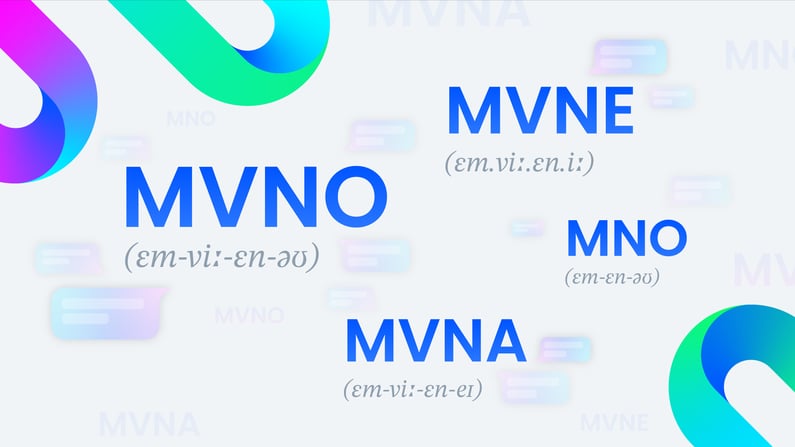
In the complex world of telecommunications, understanding the various acronyms and terms can feel like navigating a labyrinth. Among the most frequently encountered are MVNE, MVNA, MVNO, and MNO. These terms delineate different players in the telecom industry ecosystem, each with distinct purposes. Let’s break down these concepts to shed light on their differences and how they interconnect.
Mobile Network Operator (MNO)
At the apex of the mobile telecommunications pyramid are MNOs, the entities that own and operate the physical network infrastructure. MNOs deploy and maintain the cellular towers, spectrum licenses, and backend systems necessary for delivering wireless services to consumers. They invest heavily in network infrastructure, spectrum acquisition, fibre management and technology development to ensure robust and reliable service coverage.
Three UK, Vodafone, Plusnet and Virgin Media are prominent examples of MNOs operating on a global scale. These companies own and manage extensive network infrastructure, providing connectivity to millions of subscribers worldwide.
Explore billing solutions
Mobile Virtual Network Operator (MVNO)
MVNOs are the consumer-facing entities in the mobile industry that deliver wireless services to end-users. Unlike traditional Mobile Network Operators (MNOs), MVNOs do not own the underlying network infrastructure. Instead, they lease network capacity from MNOs or utilise the services provided by MVNEs and MVNAs to deliver their offerings.
MVNOs differentiate themselves through unique branding, pricing models, and targeted services, catering to specific market segments.
For example, Smarty Mobile is an end-user mobile brand owned by Three UK that hosts their network infrastructure for service delivery.
Mobile Virtual Network Enabler (MVNE)
An MVNE (Mobile Virtual Network Enabler) solution is designed to enable MVNOs (Mobile Virtual Network Operators) to offer their customers a full range of telecom services, including voice, data, and messaging, without having to invest in their own network infrastructure.
The processes are automated to increase efficiency and accuracy. Overall, an MVNE solution is essential for virtual operators and brands looking to enter the telecom market, as it provides them with the flexibility, scalability, and revenue assurance they need to succeed in a competitive and rapidly evolving industry.
For example, an MVNE like Lifecycle Software provides comprehensive backend solutions for MVNOs, handling everything from subscriber management to billing, allowing smaller players to enter the market without the burden of building their infrastructure.
Learn more about an MVNE Solution - NexusTM
Mobile Virtual Network Aggregator (MVNA)
An MVNA (Mobile Virtual Network Aggregator) is a provider of wholesale mobile and data services to businesses that, like MVNOs, sell the services to end users under their name or brand.
An MVNA connects smaller MVNOs to the MNO rather than a collection of smaller MVNOs connecting directly to the MNO. Typically, the MVNA will have no subscribers, only MVNOs, and will run its own business and operating systems.
MVNAs are frequently confused with MVNEs, although while they are similar, the primary distinction is that MVNAs contain wholesale agreements with one or more MNOs whose networks are utilised to produce bundles for MVNOs.
In summary, MVNEs provide the technological backbone for MVNOs, MVNAs aggregate services for MVNOs, MVNOs deliver wireless services to end-users, and MNOs own and operate the underlying network infrastructure. Understanding the roles and relationships between these entities is essential for comprehending the intricate dynamics of the mobile telecommunications industry. Whether you're a consumer, a business, or a telecom enthusiast, unravelling these complexities can provide valuable insights into how mobile services are delivered and managed in today's interconnected world.


